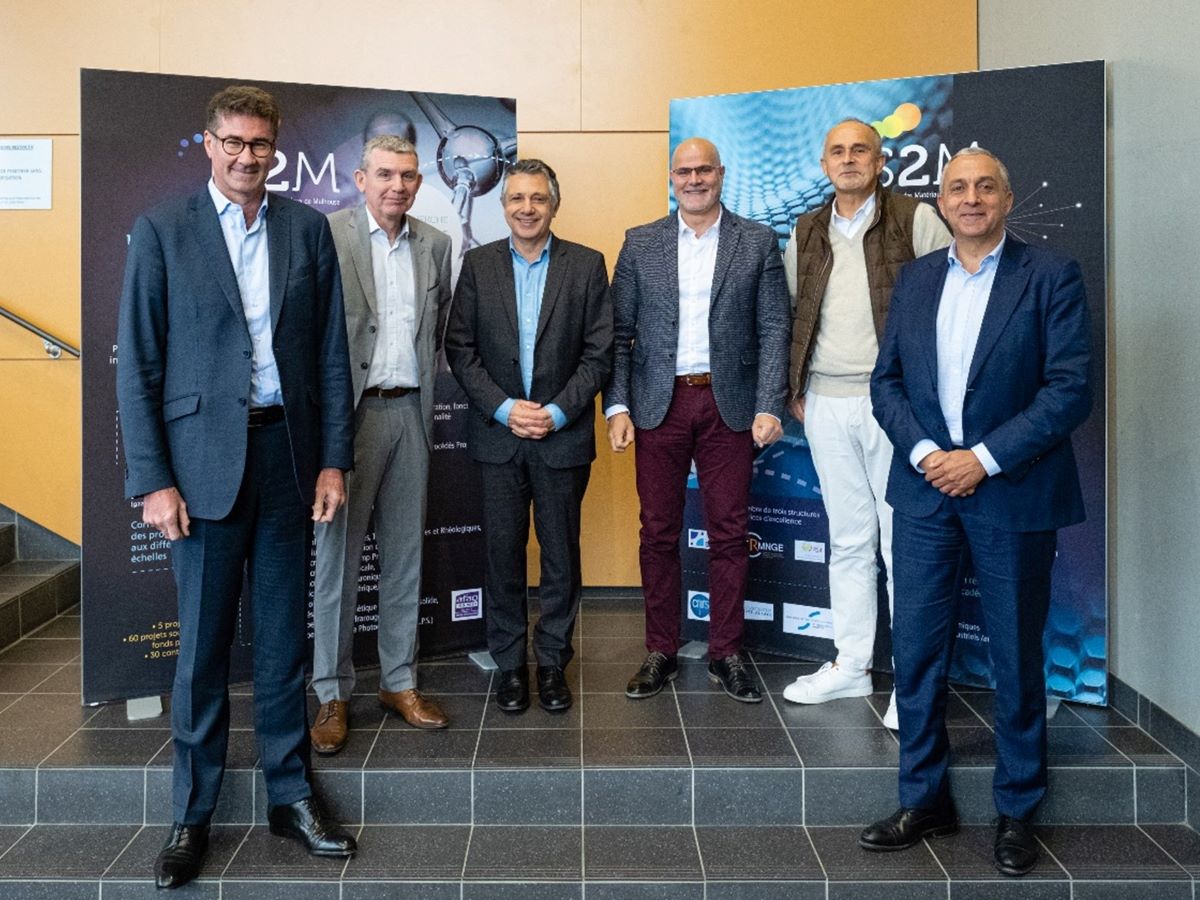Results of renewed trust between the world of research and the economic world, three new joint laboratories (Labcoms) dedicated to the design of innovative functional materials have been inaugurated between the CNRS, the University of Haute-Alsace, and three companies: Arkema, an international leader in specialty materials, Aptar, one of the world's leading suppliers of innovative packaging, and Velcorex, a textile company based in Alsace. Their creation reflects the desire for a strengthened and long-term collaboration between these partners.
Pierre-Alain Muller, President of the University of Haute-Alsace: "Innovation and technology transfer are the historical hallmarks of higher education in Mulhouse. The formalisation of joint laboratories is fully in line with this tradition of partnership research.”
The objective of this collaboration within the joint laboratory will be to design new and more sustainable photopolymer materials, and to develop new photopolymerisation processes for adhesives and 3D printing in particular.
Arkema, a world leader in specialty materials, designs and markets high-performance photopolymerization products (resins, photoinitiators, etc.) for a wide range of markets and custom formulations for 3D printing. Arkema also uses these UV materials for its own products in specialty adhesives and high performance composites.
To continue to develop new generations of innovative materials in cutting-edge fields, the Group has turned to the CNRS, and in particular to the Mulhouse Institute of Materials Science, because this is one of its areas of expertise.
Arkema is delighted to launch this new joint laboratory with the CNRS and the University of Haute-Alsace, to accelerate our fruitful collaboration. The evolution of photopolymerization techniques favor more efficient and sustainable processes, materials and solutions, in line with Arkema's strategy.”
Patrice Léoné, Director of Material Science at Aptar: "The establishment of this LabCom is a new stage in the collaboration that began more than 10 years ago between Aptar and IS2M. We are counting on IMPacT 3 to accelerate innovation in the field of materials and their interactions with their environment. Working closely with an academic partner also gives us access to IS2M's equipment and technological platforms. We also believe that the LabCom can be an effective bridge for researchers from academia to industry.”
Winner of a call for projects from the ANR, the Labcom Bio@tex, launched by Velcorex, the CNRS and the UHA, aims to manufacture new materials based on flax and hemp, 100% biosourced, recyclable or compostable, for various technical uses (building, automobile, boating, urban furniture) to replace petroleum derivatives and glass fibres. Velcorex - Emmanuel Lang is a textile group integrating all stages of the industry (spinning, weaving, finishing) which is part of the historic textile history of Mulhouse in Alsace.
Pierre Schmitt, Director of Velcorex, says: "In Mulhouse, flax has succeeded in creating new links between Velcorex -Emanuel Lang and laboratories to imagine the biomaterials of the future.”

